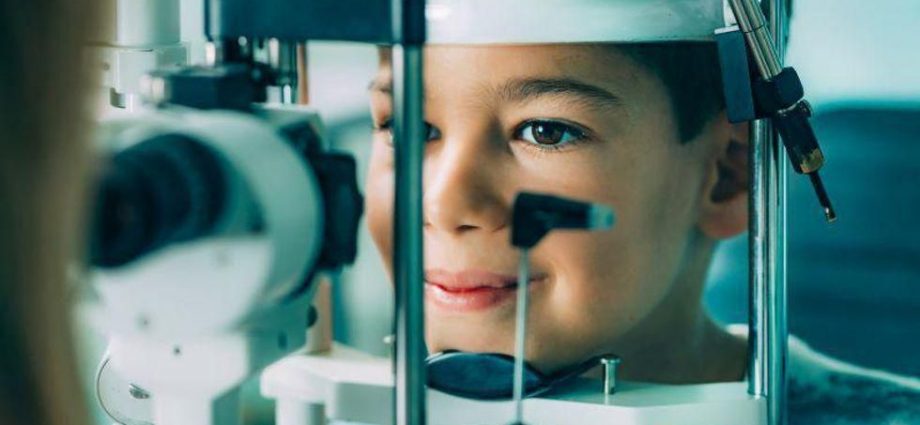THURSDAY, Dec. 9, 2021 (HealthDay News) — A condition called “diabetic retinopathy” often threatens the vision of adults with diabetes, but new research suggests that kids with type 2 diabetes may be particularly vulnerable to the vision-robbing complication.
In fact, these kids were nearly twice as likely to develop the condition as children with type 1 diabetes were, the researchers found.
“The new findings emphasize the need to differentiate between the two types of diabetes when discussing screening for eye disease with patients and families,” said study author Patricia Bai. She is a medical student at Mayo Clinic Alix School of Medicine in Arizona.
“Closer monitoring for retinopathy development in youth-onset type 2 diabetes to prevent vision-threatening complications may be warranted,” Bai said.
Type 2 is the form of diabetes most closely tied to obesity. It occurs when your body doesn’t use the hormone insulin properly. When insulin can’t do its job, blood sugar (glucose) builds up in your body, where it can cause complications including diabetic retinopathy. The condition, which damages blood vessels in the retina, is the leading cause of vision loss in people aged 18 to 64, according to the American Diabetes Association. The only way to catch diabetic retinopathy early is through annual eye exams.
For the study, the researchers examined the risk of developing diabetes-associated eye disease in 525 people aged 22 or younger who were diagnosed with either form of diabetes during a 50-year time period. Within the first 15 years of diagnosis, risk of developing diabetic retinopathy was 88% greater in kids with type 2 diabetes, compared with those who had type 1 disease. Kids with type 2 diabetes were also more likely to have advanced forms of diabetic eye disease and need surgery to treat the condition.
The new study did have its share of limitations. Type 1 diabetes often comes on quickly, but type 2 is more insidious, which is why it often takes longer to diagnose. Type 2 symptoms such as frequent urination, excessive thirst and fatigue may go unnoticed, which would shorten the timeline of complications. With type 1, you don’t make insulin or make very little of it, and symptoms can be dramatic, usually resulting in a quicker diagnosis.
“Increasing dedicated public health efforts to screen for type 2 diabetes and capture those who remain undiagnosed may help ensure management strategies are in place to reduce the risk for developing eye complications,” Bai said. “We do hope our findings will provide background for future studies that focus on prevention of ocular disease in youth-onset type 2 diabetes.”
The findings were published online Dec. 2 in the journal JAMA Ophthalmology.
Commenting on the report, experts who were not involved with the new study noted that they are concerned that rising rates of type 2 diabetes in kids may cause a tsunami of vision complications in the future.
“As the obesity epidemic spreads to children, the rates of type 2 diabetes are showing up in younger patients,” said Dr. Joshua Miller, medical director of diabetes care at Stony Brook Medicine in New York.
Making matters worse, type 2 diabetes isn’t always diagnosed right away. “It can take upward of five to 10 years to diagnose type 2, which means there is a greater potential for complications to develop. We are against the clock,” Miller added.
The most important timeframe in preventing complications is right after someone develops diabetes and in the ensuing two decades, Miller said.
“Diagnosing type 2 in a child and intervening can absolutely reverse or delay diabetes onset and lower risk of long-term complications,” he said. The best way to stave off diabetes complications is to keep your blood sugar under tight control from the get-go.
Dr. Kammi Gunton, an ophthalmologist at Wills Eye Hospital in Philadelphia, agreed.
“We know that the incidence of diabetic retinopathy increases with years since diagnosis, and the more years you have it, the greater the chance of complications,” Gunton said.
Largely because type 2 diabetes wasn’t historically seen in kids, there’s not enough data out there to say exactly when and how often these kids should have screening eye exams.
“With type 2, we ask them to come in at the time of diagnosis, and they should be examined every year,” Gunton said. “With type 1, it varies from three to five years following diagnosis and then yearly.”
More information
Learn more about how diabetes affects your vision and what to do about it at the American Diabetes Association.
SOURCES: Patricia Bai, medical student, Mayo Clinic Alix School of Medicine, Scottsdale, Ariz.; Joshua Miller, MD, medical director, diabetes care, Stony Brook Medicine, Stony Brook, New York; Kammi Gunton, MD, ophthalmologist, Wills Eye Hospital, Philadelphia; JAMA Ophthalmology, Dec. 2, 2021, online
Copyright © 2025 HealthDay. All rights reserved.

